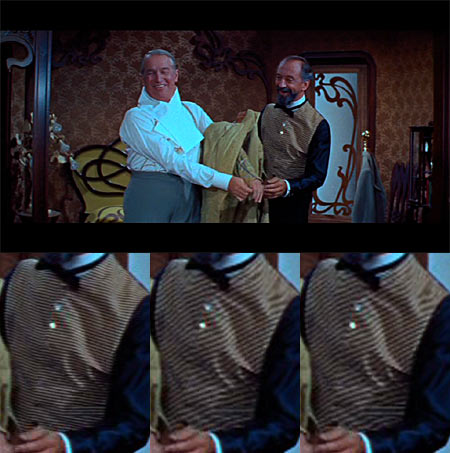Reader James has been very kind to me. First he found and sent down some VHS tapes for me to use in a comparison (still coming). Now he has sent down Seasons 1 and 2 of ‘Heroes‘ on Blu-ray. Now that’s what I can generous!
And useful, since the Australian arm of Universal didn’t bother to provide its PR company review copies of the Blu-ray releases.
So now that I’m in a position to do some comparisons, especially between the Blu-ray and HD DVD versions of Season 1. Here are the differences:
- Five discs rather than seven, thanks to the greater capacity of Blu-ray. The encodes seem to be the same VC-1, so any differences in picture quality will be solely due to the quality of the Blu-ray player versus the HD DVD player.
- The sound is in Dolby TrueHD rather than Dolby Digital Plus. Still 5.1. Differences are likely to be minimal since the original sound track doesn’t really stretch the medium.
- Spanish has been added as a subtitle to the HD DVD’s English and French.
- the ‘Helix Revealed’ feature, part of the U-Control embedded special extras of the HD DVD has been omitted, although the other parts of this remain, including the PIP commentaries on quite a few of the episodes. These are implemented as BonusView PIP features.
- All the deleted scenes and featurettes are present, including the original 71-ish minute pilot episode (it’s listed as 73 minutes on the HD DVD). There are two marked omissions though: the ‘Mind Reader Game’ from the HD DVD, and the ‘Genetics Abilities Test’, from which you were supposed to be able to upload your results to a ‘Heroes’ website.
Two different review sites suggest that this is a BD-Live (ie. Web-enabled) title. One says:
BD-Live ‘ready’ on Disc 1. This means that when Universal launches their BD-Live service later this year you will be able to access the content from online such as downloadable content, additional deleted scenes, commentary, or etc.
The other merely states this as a fact.
But the Australia Blu-ray of Season 1 mentions no such thing on the box (unlike Season 2, which does). And the Australian version seems to be shared with Europe, and seems to be identical to the US version, since it has an FBI copyright warning.
Finally, there was no hint on any of the menus of any the discs of the existence of some BD-Live functionality.
I was happy to let matters rest there, thinking that perhaps those two sites had made an error. But then I examined the Season 2 Blu-ray discs, and I could find no indication on Disc 1 of the BD-Live content which is claimed to be there. But the back of Season 2’s box clearly states:
Access the BD-Live Centre online and download even more bonus content: the newest trailers, on-set interviews, exclusive events and much more!
The episode guide on the back of the slick says that this is on Disc One. But I can’t find any reference to it in any of the menus on that disc.
So now I’m totally confused about whether there is indeed BD-Live content for Season One, and how you get at BD-Live content for Season Two. I shall have to find out on Monday.

 With a view to helping that, Sony says it will be launching a significant publicity campaign very soon on Channel 10 to raise Blu-ray’s profile (it will involve a ‘classic Australian actor’).
With a view to helping that, Sony says it will be launching a significant publicity campaign very soon on Channel 10 to raise Blu-ray’s profile (it will involve a ‘classic Australian actor’). So Sony is suddenly tripling the number of full BD-Live Blu-ray players on the market (beating, it seems, Panasonic with its unit). But here is where the cat does indeed get amongst the pigeons. The pricing.
So Sony is suddenly tripling the number of full BD-Live Blu-ray players on the market (beating, it seems, Panasonic with its unit). But here is where the cat does indeed get amongst the pigeons. The pricing.